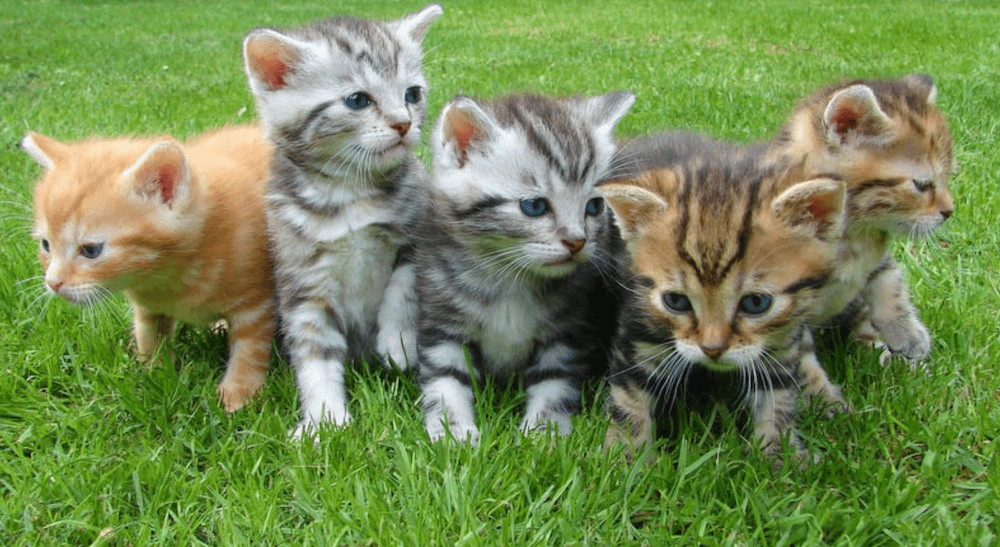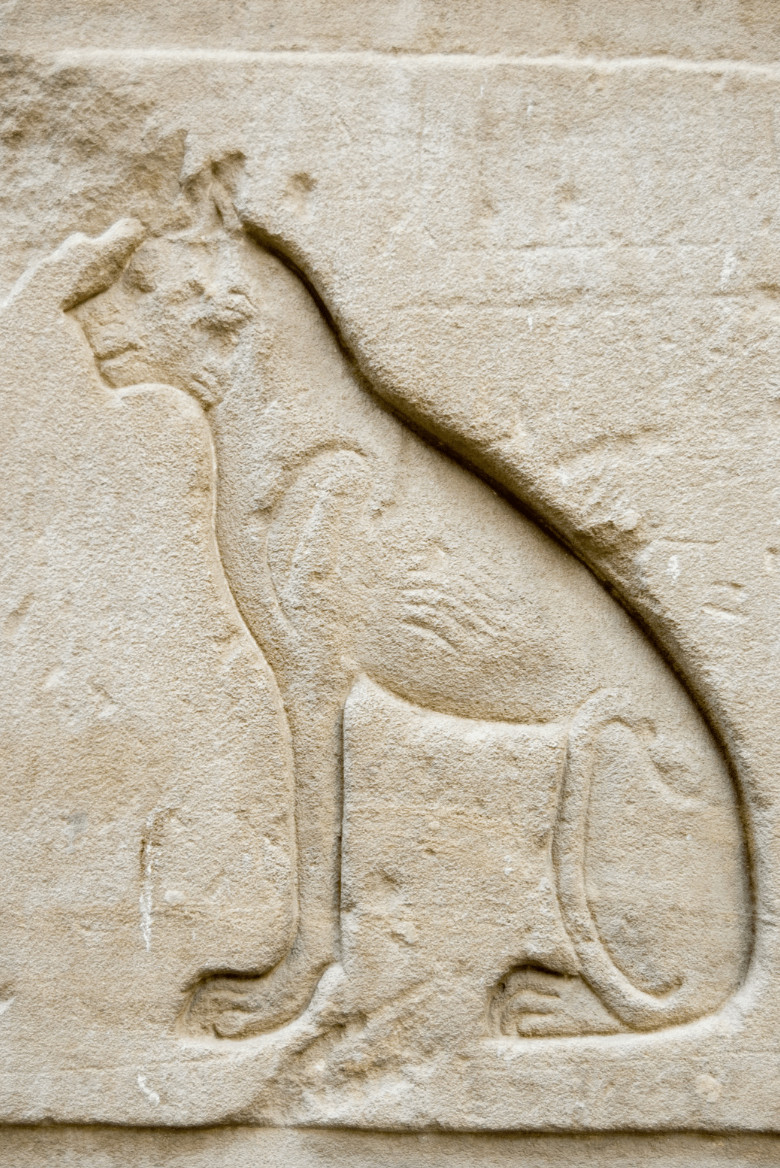Are you curious about the collective noun for a group of cats and eager to expand your feline vocabulary? At solcat.net, we’ll reveal the surprising term for a group of cats and delve into other interesting cat-related terms. Whether you are a cat enthusiast or a new cat owner, understanding feline terminology enhances your appreciation for these beloved animals and equips you with knowledge to share with fellow cat lovers. Explore solcat.net for more captivating cat facts and care tips.
1. What is the Collective Noun for a Group of Cats?
The most common collective noun for a group of cats is clowder. While “group of cats” is perfectly acceptable, “clowder” adds a touch of whimsy to your feline vocabulary. Other terms, less frequently used, include clutter and glaring. When referring specifically to a group of kittens, the term kindle is used, evoking images of a warm and cuddly gathering. For wild or feral cats, you might encounter the terms dowt (or dout) and, surprisingly, destruction.
- Clowder: The most common and widely recognized term.
- Clutter: Suggests the playful chaos a group of cats can create.
- Glaring: Perhaps refers to the intense stares cats are known for.
- Kindle: Specifically for kittens, emphasizing their youth and innocence.
- Dowt/Dout: Used for wild or feral cats, less common.
- Destruction: A humorous term for a group of feral cats, highlighting their potential impact on the environment.
These terms aren’t just fun facts; they reflect different aspects of feline behavior and social dynamics. Understanding these nuances can enrich your relationship with your feline companions.
2. Why Is a Group of Cats Called a Clowder?
The origin of the term “clowder” is somewhat mysterious, lacking definitive historical documentation. One popular theory suggests it derives from the Middle English word “clodder,” meaning a confused mass or heap. This could refer to the sight of many cats huddled together. However, it’s important to acknowledge the absence of concrete etymological evidence to confirm this theory definitively.
Despite the uncertainty surrounding its origin, “clowder” has been embraced as the official term through common usage and inclusion in dictionaries and word lists. Its adoption reflects a human tendency to create specific and sometimes whimsical terms for animal groups, adding color to our language and reflecting our fascination with the natural world.
Regardless of its exact origins, “clowder” remains the most widely recognized and accepted term for a group of cats, celebrated for its quirky charm.
3. Are There Different Names for Groups of Wild Cats?
Yes, there are specific terms used to describe groups of wild or feral cats. These terms often reflect the more untamed nature of these felines.
Dowt (or Dout)
This term is relatively uncommon but specifically refers to a group of wild or feral cats. Its origin is unclear, but it adds to the rich tapestry of feline-related vocabulary.
Destruction
Perhaps the most evocative term, “destruction” highlights the potential impact a large group of feral cats can have on their environment. This term is a bit tongue-in-cheek, acknowledging the challenges that can arise when feral cat populations are not managed.
Understanding these terms can help you differentiate between domestic cat groups and their wilder counterparts, while acknowledging the different contexts in which these animals live.
4. What Is a Group of Kittens Called?
A group of kittens is called a kindle. This term is particularly charming, evoking images of warmth, comfort, and new life. The word “kindle” itself means to ignite or spark, which is fitting considering the playful and energetic nature of kittens.
The use of “kindle” to describe a group of kittens reflects the nurturing and protective instincts of the mother cat, who keeps her “kindle” close and safe. This term is a delightful addition to the feline lexicon, perfectly capturing the essence of kittenhood.
 A group of kittens huddled together, known as a kindle, displaying their playful and cuddly nature
A group of kittens huddled together, known as a kindle, displaying their playful and cuddly nature
5. What Are Some Other Uncommon Cat Terms?
Beyond the collective nouns for groups of cats, there are other interesting and less common terms used to describe individual cats and their characteristics.
Terms for Male and Female Cats
- Tom: A male cat. This term is widely recognized and used.
- Gib: A neutered male cat. This term is less common but adds specificity to feline descriptions.
- Molly: A female cat. Similar to “tom,” “molly” is a simple and straightforward term.
- Queen: A pregnant female cat. This term emphasizes the cat’s regal status during pregnancy.
Other Descriptive Terms
- Moggy: A British term for a mixed-breed cat or a cat of unknown ancestry. This term is more common in the UK than in the US.
- Cattery: A place where cats are bred or boarded.
Expanding your feline vocabulary can deepen your appreciation for these animals and enhance your ability to communicate with other cat enthusiasts.
6. How Did the Word “Cat” Originate?
The etymology of the word “cat” is a fascinating journey through language and history, revealing the long-standing relationship between humans and felines.
- Old English: The word “cat” comes from the Old English word “catt.”
- Late Latin: “Catt” originates from the Late Latin word “catus,” meaning “domestic cat.”
- Afro-Asiatic: Evidence suggests that the Latin term came from the Afro-Asiatic word “kaddîska,” which is said to mean “wild cat.”
- Egyptian: The Egyptian word for cat is “mau,” which sounds similar to the sound cats make.
This linguistic journey highlights the enduring presence of cats in human civilization and the ways in which language has evolved to reflect this relationship.
 An ancient Egyptian hieroglyph depicting a cat, reflecting the animal's historical significance
An ancient Egyptian hieroglyph depicting a cat, reflecting the animal's historical significance
7. What Are Common Cat Breeds in the USA?
The United States is home to a wide variety of cat breeds, each with its unique characteristics and appeal. Here are some of the most popular cat breeds in the USA:
| Breed | Origin | Characteristics |
|---|---|---|
| Maine Coon | United States | Large, gentle, and known for its shaggy coat and friendly demeanor. |
| Ragdoll | United States | Relaxed, affectionate, and known for going limp when held. |
| Persian | Iran | Long-haired, sweet-faced, and known for its luxurious coat. |
| British Shorthair | United Kingdom | Round-faced, calm, and known for its dense coat and easygoing nature. |
| Siamese | Thailand | Vocal, intelligent, and known for its striking blue eyes and colorpoint coat. |
| Abyssinian | Southeast Asia | Active, intelligent, and known for its ticked coat and curious personality. |
| Bengal | United States | Energetic, playful, and known for its spotted coat that resembles a wild cat. |
| American Shorthair | United States | Adaptable, friendly, and known for its classic tabby pattern. |
| Sphynx | Canada | Hairless, affectionate, and known for its wrinkled skin and playful personality. |
| Scottish Fold | Scotland | Sweet-faced, gentle, and known for its folded ears. |
These breeds represent just a small fraction of the diverse feline population in the USA. Each breed offers a unique set of traits and characteristics, allowing prospective cat owners to find the perfect companion to suit their lifestyle and preferences.
8. What are the most common health issues in cats in the USA?
As a responsible cat owner, it’s essential to be aware of the common health issues that can affect cats in the USA. Early detection and preventative care can significantly improve your cat’s quality of life. Here are some of the most prevalent health concerns:
- Feline Lower Urinary Tract Disease (FLUTD): This condition encompasses a variety of urinary problems, including bladder stones, inflammation, and blockages. Symptoms can include frequent urination, straining to urinate, and blood in the urine.
- Kidney Disease: Chronic kidney disease is a common ailment in older cats. Symptoms may include increased thirst and urination, weight loss, and decreased appetite.
- Hyperthyroidism: This hormonal disorder occurs when the thyroid gland produces excessive thyroid hormones. Symptoms include weight loss, increased appetite, hyperactivity, and vomiting.
- Diabetes Mellitus: Similar to humans, cats can develop diabetes, which affects their ability to regulate blood sugar. Symptoms include increased thirst and urination, weight loss, and increased appetite.
- Dental Disease: Dental problems, such as gingivitis and periodontal disease, are common in cats. Regular dental care, including brushing and professional cleanings, is essential.
- Obesity: Overweight cats are at higher risk for various health problems, including diabetes, arthritis, and heart disease.
- Heart Disease: Various heart conditions can affect cats, including hypertrophic cardiomyopathy (HCM), which causes thickening of the heart muscle.
- Cancer: Cancer is a leading cause of death in cats. Common types of cancer in cats include lymphoma, mammary cancer, and skin cancer.
Consulting with a veterinarian is crucial for diagnosing and managing these and other health issues in cats. Regular check-ups and preventative care can help ensure your feline companion lives a long and healthy life.
9. How to solve challenging cat behaviors?
Addressing challenging cat behaviors requires patience, understanding, and consistency. Here’s a structured approach to help you tackle common issues:
-
Identify the Root Cause:
- Medical Issues: Rule out any underlying medical conditions by consulting a veterinarian. Pain or discomfort can often trigger behavioral changes.
- Environmental Factors: Assess your cat’s environment for potential stressors, such as changes in routine, new pets, or loud noises.
-
Provide Environmental Enrichment:
- Scratching Posts: Offer a variety of scratching surfaces to satisfy your cat’s natural scratching instincts and protect your furniture.
- Climbing Structures: Provide cat trees or shelves to allow your cat to climb and explore, satisfying their need for vertical space.
- Interactive Toys: Engage your cat’s hunting instincts with interactive toys, such as puzzle feeders, laser pointers, and feather wands.
-
Modify Behavior with Positive Reinforcement:
- Reward Desired Behaviors: When your cat exhibits the behavior you want to encourage, immediately reward them with praise, treats, or affection.
- Ignore Undesirable Behaviors: Avoid punishing your cat, as this can create fear and anxiety. Instead, ignore unwanted behaviors and redirect your cat’s attention to a more appropriate activity.
-
Address Specific Behavioral Issues:
- Inappropriate Elimination: Ensure your cat has access to clean litter boxes in quiet and accessible locations. Experiment with different types of litter to find one your cat prefers.
- Aggression: Identify the trigger for your cat’s aggression and avoid situations that provoke it. Consult with a veterinary behaviorist for guidance on managing aggressive behavior.
- Excessive Vocalization: Determine the reason for your cat’s vocalization. If it’s due to boredom or attention-seeking, provide more enrichment and interaction.
-
Seek Professional Help:
- Veterinary Behaviorist: If you’re struggling to manage your cat’s behavior on your own, consult with a veterinary behaviorist. They can provide a comprehensive assessment and develop a customized treatment plan.
- Certified Cat Behavior Consultant: A certified cat behavior consultant can offer guidance and support on a variety of behavioral issues.
Remember, consistency and patience are key to successfully modifying your cat’s behavior. With the right approach, you can help your feline friend overcome their challenges and live a happier, more fulfilling life.
10. What are the latest advancements in cat care in the USA?
The field of cat care is constantly evolving, with new advancements emerging regularly to improve the health and well-being of our feline companions. Here are some of the latest developments in cat care in the USA:
| Advancement | Description | Benefits |
|---|---|---|
| Precision Nutrition | Tailored diets based on a cat’s individual needs, considering factors like age, breed, lifestyle, and health conditions. | Improved digestion, weight management, and overall health. |
| Advanced Diagnostics | Cutting-edge imaging techniques and laboratory tests for early detection and accurate diagnosis of diseases. | Earlier intervention, more effective treatment, and improved outcomes. |
| Minimally Invasive Surgery | Surgical procedures performed through small incisions, resulting in less pain, faster recovery, and reduced risk of complications. | Reduced discomfort, quicker healing, and improved quality of life. |
| Regenerative Medicine | Therapies that use a cat’s own cells to repair damaged tissues and organs, such as stem cell therapy for arthritis. | Potential to heal injuries and diseases, reduce pain, and improve mobility. |
| Feline Behavior Therapy | Specialized techniques for addressing behavioral issues, such as anxiety, aggression, and inappropriate elimination, with a focus on positive reinforcement. | Improved relationships between cats and their owners, reduced stress, and enhanced well-being. |
| Telemedicine | Remote consultations with veterinarians via video conferencing or phone, providing convenient access to care for routine check-ups and minor health concerns. | Increased access to veterinary care, especially for cats in rural areas or those with mobility issues. |
| Smart Cat Products | Innovative devices that monitor a cat’s activity, feeding habits, and litter box usage, providing valuable insights into their health and behavior. | Early detection of potential health problems, personalized care recommendations, and peace of mind for owners. |
| Gene Therapy | Experimental treatments that aim to correct genetic defects that cause disease, such as spinal muscular atrophy. | Potential to cure previously incurable diseases and improve the lives of cats with genetic disorders. |
| Advanced Pain Management | New medications and techniques for managing chronic pain in cats, such as osteoarthritis and cancer. | Improved comfort, mobility, and quality of life for cats suffering from pain. |
These advancements represent a significant step forward in cat care, offering new hope for improving the health and well-being of our feline companions. By staying informed about these developments, you can provide the best possible care for your cat.
FAQ About Groups of Cats
1. What is the most common term for a group of cats?
The most common term is “clowder.”
2. Is “clutter” an acceptable term for a group of cats?
Yes, “clutter” is an alternative, though less common, term.
3. What do you call a group of wild cats?
A group of wild cats can be called a “dowt” or “destruction.”
4. What is a group of kittens called?
A group of kittens is called a “kindle.”
5. What is a male cat called?
A male cat is called a “tom.”
6. What is a neutered male cat called?
A neutered male cat is called a “gib.”
7. What is a female cat called?
A female cat is called a “molly.”
8. What is a pregnant female cat called?
A pregnant female cat is called a “queen.”
9. What is a mixed-breed cat called in British English?
A mixed-breed cat is called a “moggy.”
10. Where does the word “cat” come from?
The word “cat” comes from the Old English word “catt,” which originates from the Late Latin word “catus.”
Exploring the terminology surrounding cats can be both fun and educational, enriching your appreciation for these fascinating creatures.
Do you want to learn more about cat breeds, cat care, and address cat challenging behaviors? Visit solcat.net, where you can find articles, connect with other cat lovers, and get expert advice. At solcat.net, located at 950 Alaskan Way, Seattle, WA 98104, United States, we understand the unique challenges and needs of cat owners in the USA, and our team is dedicated to providing you with the most accurate and up-to-date information available. Don’t wait, explore solcat.net today and unlock a world of feline knowledge and resources. You can also call us at +1 (206) 386-4000.

